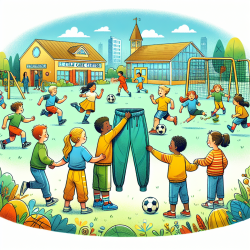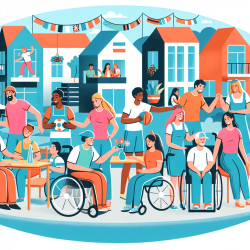Introduction
In the realm of child-care centers, ensuring that children engage in adequate physical activity is a priority for fostering healthy development. However, as highlighted in the research article "Flip flops, dress clothes, and no coat: clothing barriers to children's physical activity in child-care centers identified from a qualitative study," inappropriate clothing can significantly hinder children's ability to participate in physical activities. This blog post aims to provide practitioners with insights on how to overcome these barriers and enhance children's physical activity in child-care settings.
Understanding the Research Findings
The study conducted by Copeland et al. (2009) revealed two primary themes: children's clothing as a barrier to physical activity and the conflict it creates between parents and child-care providers. Inappropriate clothing items, such as flip flops, dress clothes, and lack of weather-appropriate attire, were identified as significant impediments to children's active play. These clothing choices often led to conflicts between parents and child-care providers, further complicating the issue.
Implementing Solutions in Child-Care Centers
To address these barriers, child-care centers can implement several strategies:
- Develop Clear Clothing Policies: Centers should establish and communicate clear policies regarding appropriate clothing for physical activities. This includes guidelines on footwear, weather-appropriate attire, and the prohibition of jewelry that could pose safety risks.
- Engage in Parent Education: Educating parents about the importance of appropriate clothing for their child's physical activity can foster better understanding and compliance. Providing informational handouts and discussing the benefits of active play during parent meetings can be effective.
- Maintain a Supply of Extra Clothing: Keeping a stock of extra coats, hats, gloves, and appropriate footwear at the center can ensure that all children can participate in outdoor activities, regardless of their initial attire.
- Utilize Indoor Spaces: On days when outdoor play is not feasible due to inappropriate clothing or weather conditions, centers can use indoor spaces designed for physical activities to ensure children remain active.
Encouraging Further Research
While the study provides valuable insights, further research is needed to explore the prevalence of clothing-related barriers and their impact on children's physical activity levels. Practitioners are encouraged to conduct their own assessments and contribute to the body of knowledge in this area. Understanding the specific needs and challenges of their centers can lead to tailored solutions that enhance children's physical activity opportunities.
Conclusion
Addressing clothing barriers in child-care centers is crucial for promoting children's physical activity and overall development. By implementing clear policies, engaging parents, and maintaining flexibility in activity spaces, centers can create an environment conducive to active play. Practitioners are encouraged to use these insights to improve their practices and contribute to ongoing research in this field.
To read the original research paper, please follow this link: Flip flops, dress clothes, and no coat: clothing barriers to children's physical activity in child-care centers identified from a qualitative study.










